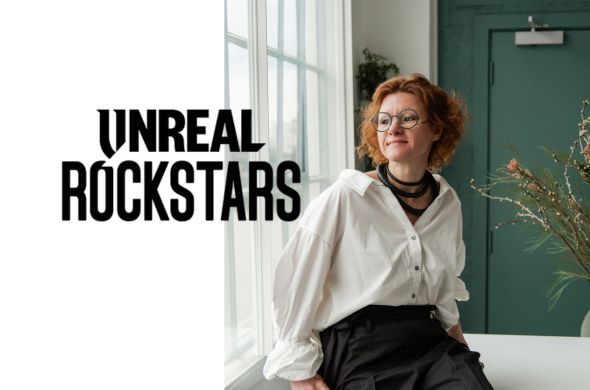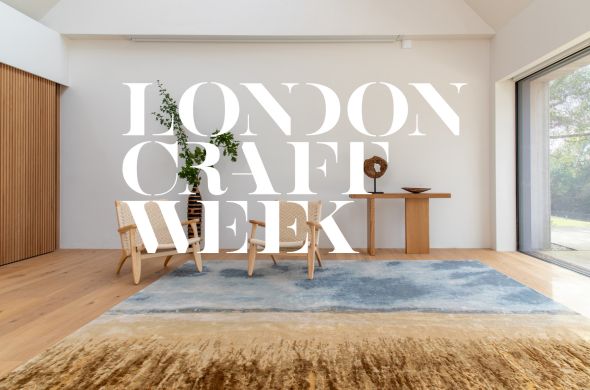O&A London celebrates its 20-year anniversary. In past years the studio grew by creating not only unique world class interiors but also bespoke furniture, textile, rugs, lights and wall covering collections. The creative tandem of the studio’s leaders Oleg Klodt and Anna Agapova are the driving force behind the team.
During this time, we have been lucky enough to collaborate with extremely talented and creative professionals from around the world. They have not only become partners and co-authors of our collections but also friends. We continue our series of “20/20” where we introduce you to our colleagues and friends – artists, designers and craftsmen – tell you about their input into our success.
Our guest today is Eugenia Mikulina. Eugenia is the founder of an influential media resource dedicated to design and architecture Design chat and a former editor-in-chief of Architectural Digest Russia magazine.
O&A: What did you dream of as a child?
EM: This may sound strange but when I was a child, I dreamed of being the widow of a great person with two children. I’m not joking! At 12 this was one of my most common fantasies.
O&A: What was the first profession you started thinking about?
EM: Since I was 10, I planned to work in the theatre. I was going to become an actress and meet a great actor there. Later, when I was 15, it transpired I had a good singing voice so I started voice training, and was planning to become the widow of a great singer! Then I got bored of it because, coming from a completely different world, it was very difficult to make it in the theatre. Despite this, after finishing school I tried to get into a performing arts college but realised it was not for me and changed direction. Many years later I realised I should have studied directing not acting.
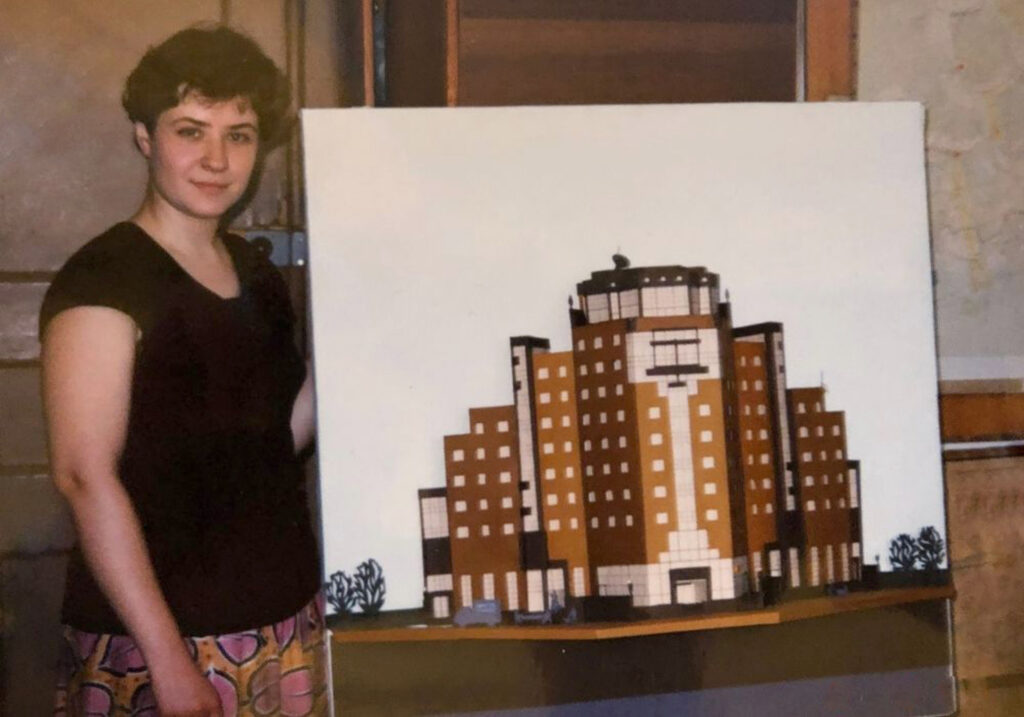
O&A: Did your parents having architectural degrees influence your choice of university? (Moscow Architectural Institute)
EM: Of course, it did.! My parents are not just architects; they are professors and lecturers at the Moscow Architectural Institute. This meant I not only witnessed their work and projects but also endless dissertations a constant flow of students who came to our house for consultations. To be an architect and to live among architects was a natural thing for me but I did not feel especially drawn to architecture. When I finished school, I started working as a translator as my English was quite good, and it was then that I realised that one has to be pragmatic when it comes to education. Moscow Architectural University was a familiar place so I went there.
O&A: Did you like studying there?
EM: Yes. I think architectural education is one of the best. It is a perfect balance between art and science. You can do everything, including working with your hands, as you will have to work with your hands quite a lot.
O&A: In one of your articles you said:” I have an architectural degree but my calling is to be a writer”. Have you ever thought about changing your profession?
EM: I am not changing my profession because having graduated from MAI with a degree in theory and history of architecture I am an architectural critic by trade, and have been working as such since my graduation. However sometimes I write some other stuff beside my professional articles. I would love to see the day when by writing this stuff, I will be getting paid enough to be able to seriously consider change of profession.
O&A: You have a very creative family. Have you already discussed your children’s’ professional future with them?
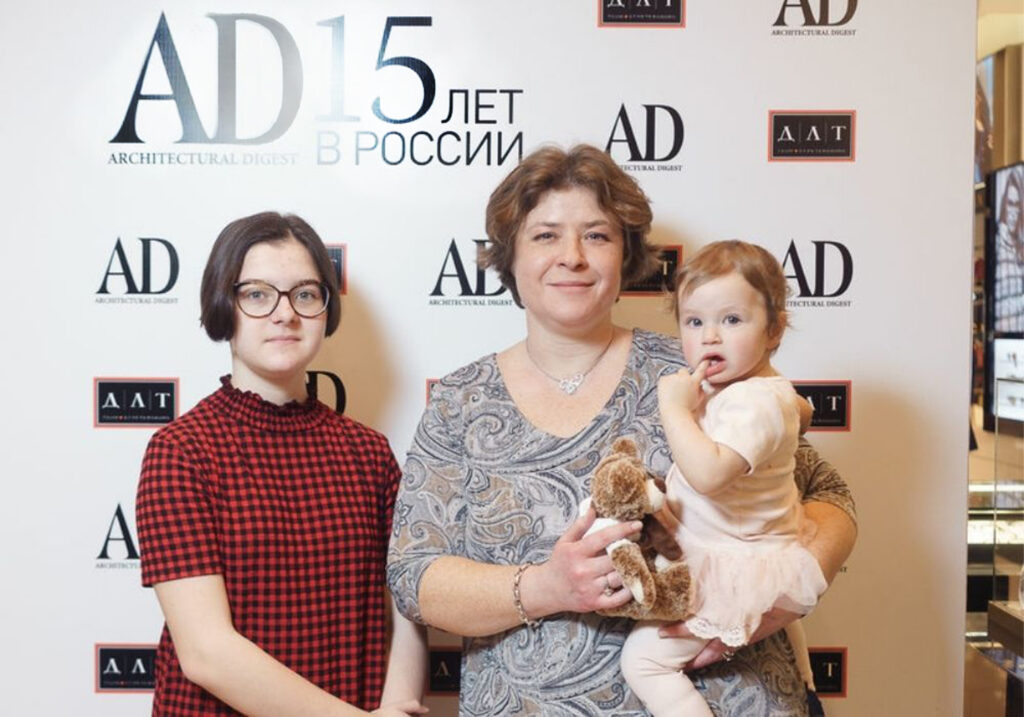
EM: Thankfully my sixteen-year-old eldest daughter does not want to be a creative person and is planning to become the President of Russian federation and is very practical about it! It is not quite one of those “when I grow up, I will be an astronaut” dreams. She is planning to get a degree in Political Science and get seriously involved in social structure. And my youngest daughter is nearly four. Yesterday she wanted to be a bat but still spends most of her time planning to become a princess.
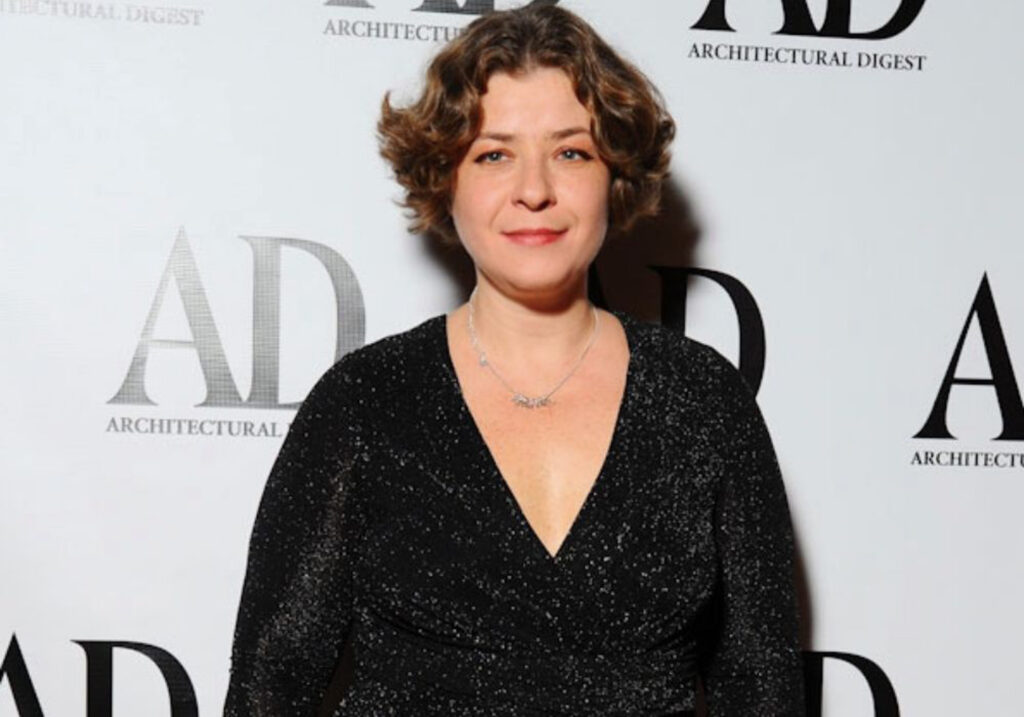
O&A: Tell us about your creative journey that led you to AD in 2002.
EM: During my final years at university I was already writing articles for various architectural magazines so when I graduated it was very fortunate that a vacancy of editor opened in the “Project Russia” magazine. The magazine was published once every three months and the work was not rushed. I received my first and quite substantial assignment – to collect all of the information about their projects from all of the hundred participants of the “Golden Ratio” competition. I completed this task within a week. They were all very surprised of course because they were not used to things being done so fast and were very happy about it. I started working for them and gradually became a deputy editor in chief remaining there for quite a long time. When AD was launched in Russia, the publishers were looking for the architectural editor. They approached me and set out their conditions which were not at all acceptable for me and I told them as much. They thought about it and came back with a different offer which I accepted. They basically bought me! In July 2002 I started as an ordinary editor in AD. In September 2002 the first issue came out and by that time I was a deputy editor-in-chief. The secret of my success is efficiency.
O&A: Interviewing is considered to be one of the most difficult things in journalism. How is it for you?
EM: When you are interviewing someone the most difficult thing is to stop talking yourself. When you are with an interesting person all you want to do is to talk to this person, but because it is an interview which is supposed to let the person speak it is very important to be quiet and listen. I have several tricks which make interviewing easier. For example, when you know nothing about your guest you start with this wonderful phrase: “We all know about your great achievements. Please tell us which ones are the most important to you”. The interviewee starts replying and you gradually start remembering who they are and what they have achieved. The following questions also always work well: “What was your biggest failure?”, “What was your biggest success?”, “Your biggest building?”, “Your smallest building?”. My favourite question when the interview is proving boring is: “What is the question that no one ever asked you but you always wanted them to?”

O&A: While working at AD you sometimes had to choose work to publish therefore highlighting some designers over others. How difficult is it to take on such great responsibility?
EM: First of all, there is a certain selection requirement – a list of professional qualities which are visible within a project and signal that the project is good. One of those is the lack of anything fake. Then begins the process of selecting suitable projects for the edition and this is not about picking one designer over another. Every edition must feature projects that are completely different in style – Provence, classical, modernist, minimalist etc. This is needed in order for anyone who buys this magazine to find something in it that they like. Everyone’s tastes differ and it is difficult to please everyone at once, so an entirely minimalist issue will not appeal to those who like softer things. Therefore, maintaining a balance is very important. The editorial team then selects projects for future issues from those submitted and deemed acceptable.
O&A: You once worked on an issue with Philippe Starck, did he surprise you in any way?
EM: We chose Starck because his is one of the biggest names of all. We met rather unexpectedly. He came here to present a project and I literally caught him and told him we wanted to make an issue with him in it. To my great surprise he replied “fine, send me the talking points” and we started our work.
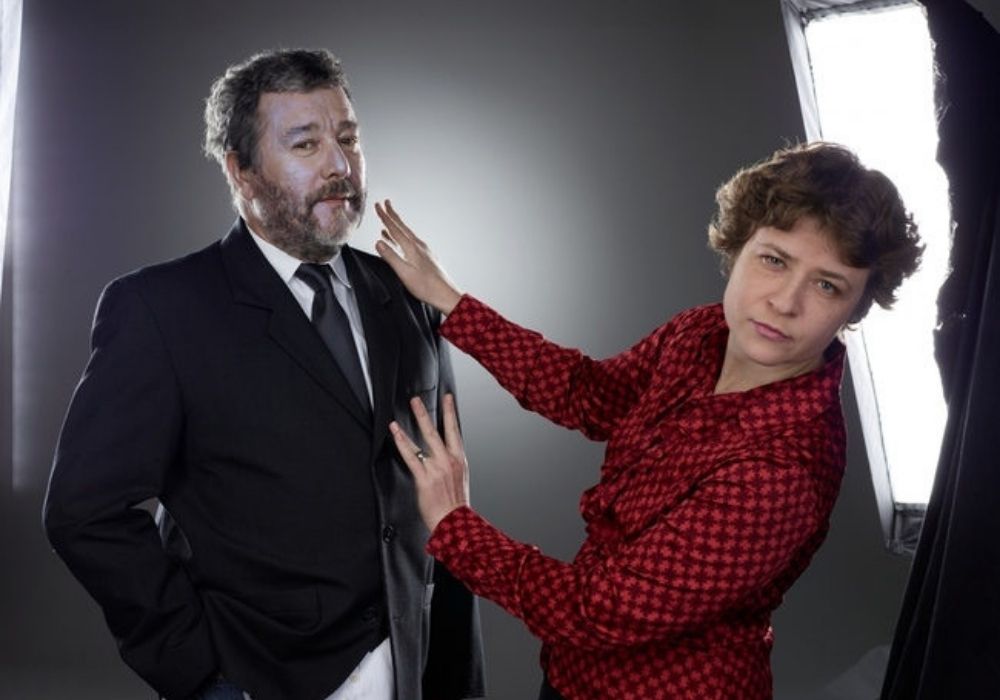
His attitude to life is very pragmatic but at the same time he is always really charming. But one thing really struck me. We created a special cover for the issue with his portrait, held a very expensive photoshoot and edited it trying to create a mutant effect. We wanted to create an Esquire type front cover but our management did not allow me to place “some bearded bloke” on the AD front cover because it apparently did not match our concept as AD front cover should have furniture on it.
We had to make two front covers – one limited edition issue not for sale with his photo and one with an interior photo on it. As much as I was trying to put it off there was a moment when I had to explain to Starck that he will not appear on the cover. And what really surprised me is that he did not kick up a fuss and just said:” Not a problem. Could you send me a few copies of the issue to Paris so I can show my friends”? It was amazing because the absence of a tantrum from a star of this magnitude is seriously cool.
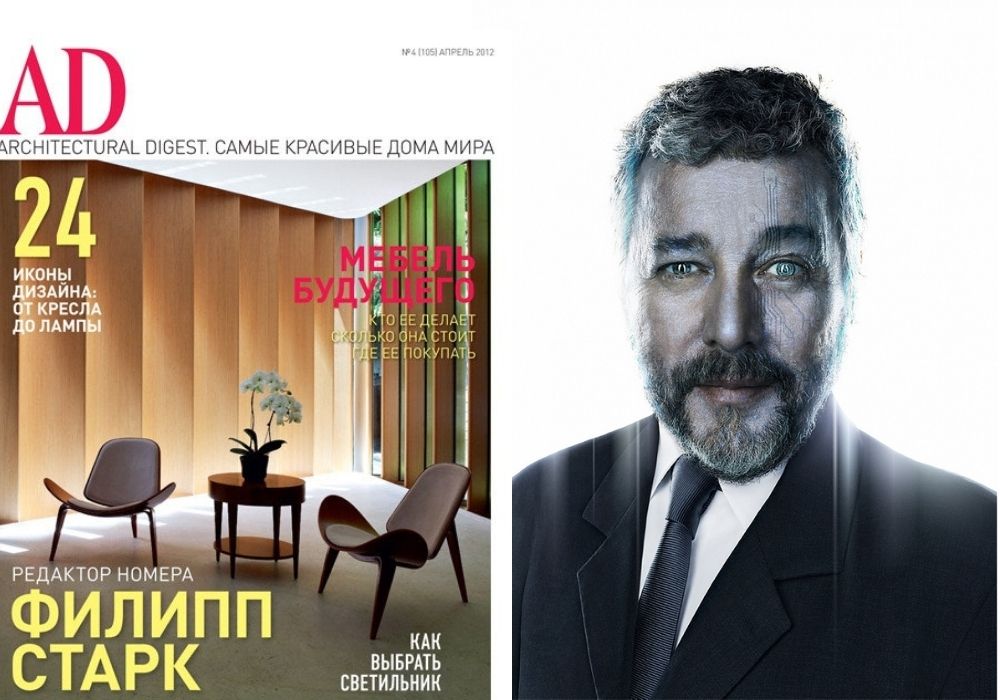
O&A: What other important figures from this area would you like to work with?
EM: The most amazing thing is that I have worked with almost all of them during my professional career. It is all very blurred now because everyone is constantly releasing and posting something or other. I would love to create something with Nick Haslam – it doesn’t matter what. With people of this calibre one just wants to work and it doesn’t matter what it is you work on. It is very important to come into contact with these amazing people in this world.
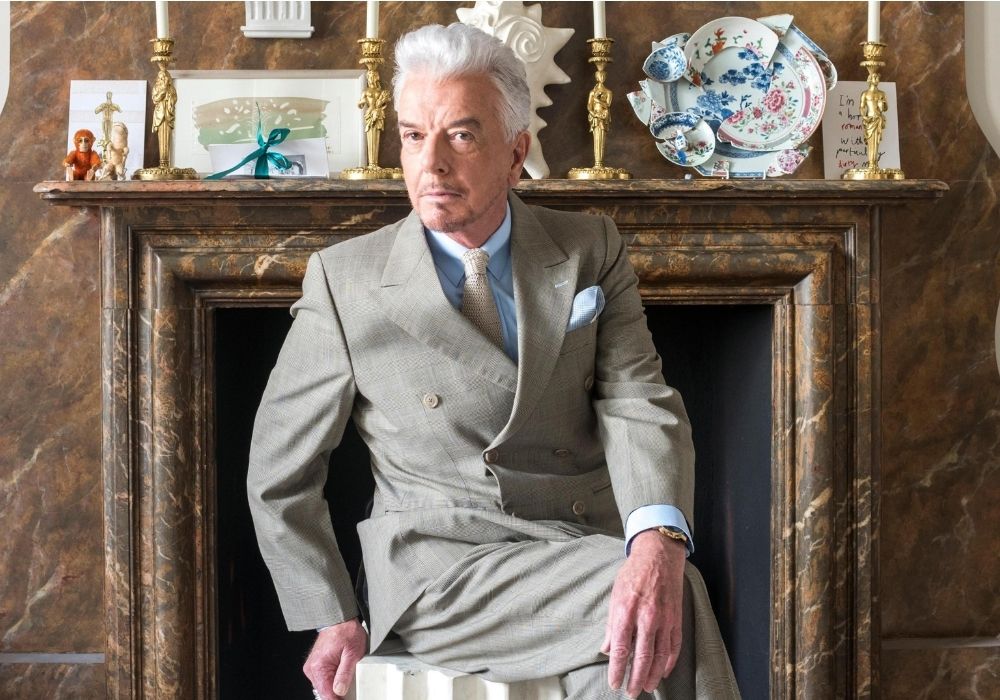
O&A: What tendencies have you noticed lately in the art of interior design?
EM: I don’t think that one can apply the term “tendencies” to the art of interior design. There are some socially significant stories such as eco-materials, artificial materials, renewable instead of non-renewable, nano techniques for fine stitches, but these are not really tendencies but rather innovations. And what we call tendencies in the popular sense of the word (seasonal colours, brass legs) is about wider supply. After that the products are called a trend and are distributed everywhere, but it’s not a tendency, it’s a trend.
O&A: Do you think art can upset?
EM: Of course it can. Real art is so emotionally charged that it can upset unintentionally, touch a sensitive nerve and be perceived as personal pain.
O&A: Several years ago, you created your own project designchat, which is now becoming a very influential source. Was it not frightening to turn your career around so much and to something so new?
EM: Our motto is idiocy and bravery! (laughs). My favourite Tony Stark (a Marvel movie hero) said a wonderful phrase at a press conference upon his return from Afghanistan: “I realised that I became a hostage to the system drowning in its own lack of responsibility.”
So, having worked for sixteen years in interior gloss I realised that I am serving the system I do not agree with, and that is moving in the wrong direction (both in commercial and ideological sense). I left and started my own platform where I can talk about things I cannot talk about in glossy magazines. At that point I could feel the commercial potential of a different interaction between media and the market. We are still in the process as we are very young. Media starts working well after three years. We are in year two and it looks like this ‘three-year rule’ is true.
O&A: Tell us about how and when you came across Oleg and Anna. Do you remember your first project together?
EM: I heard about Oleg a long time ago, when I was still at university. A student with that name was quite well known in cultural circles.
The first project I remember was a country house that was sent to AD. It was a very interesting project executed in an unusual manner that made it stand out from the others. The distinguishing feature was a dark plywood covering which looked very striking, architectural and original. It was very clear from this project that one needed to keep an eye on that studio and follow them.
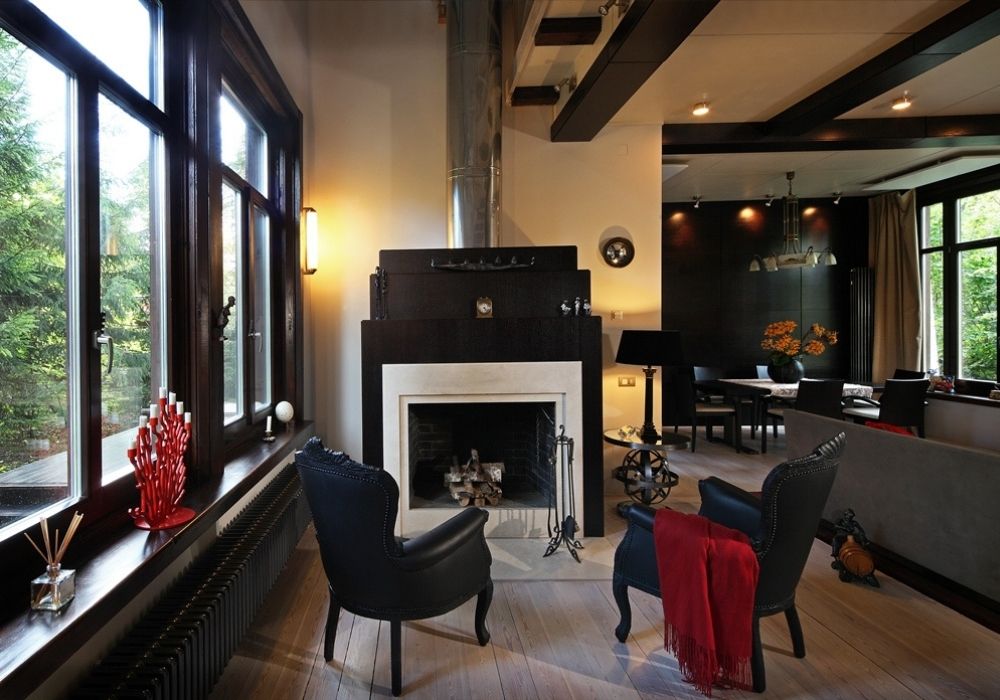
It is so great to see each project become better and better. I love stories like this, I love when something right happens in front of my very eyes. And this is that kind of story!
O&A: Do you have a favourite project by Oleg and Anna?
EM: I really like Oleg’s apartment, which he recently showed, but it is unusual for his style. I also remember country houses in english style. But my favourite project is the constructivist house “Rublevka”.
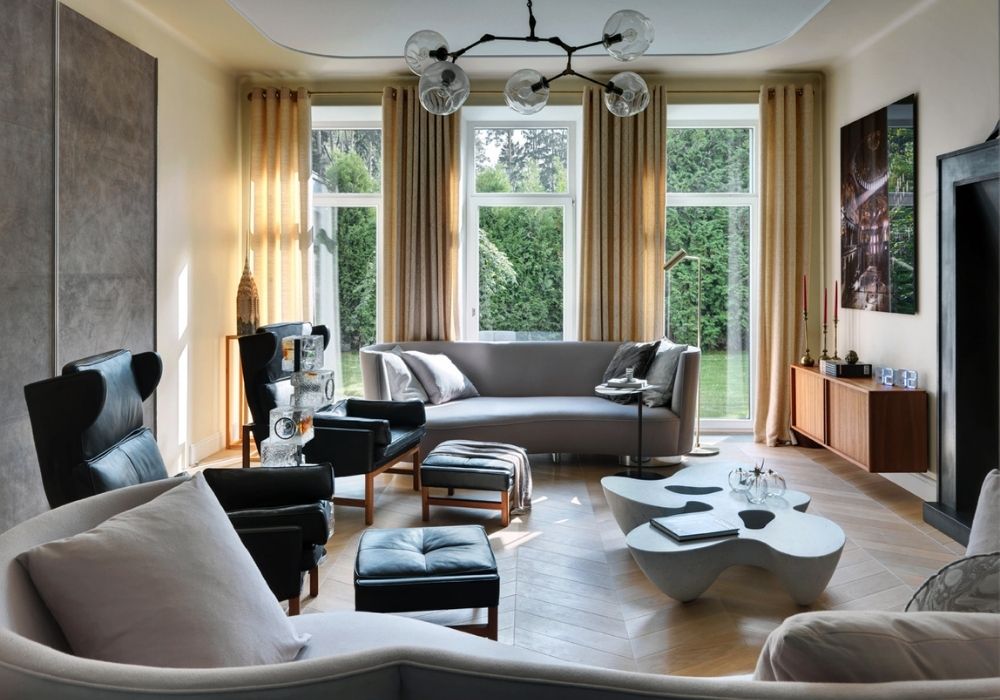
I like how this brand is developing and the logic and correctness of your journey (at first just interior design, then furniture and lighting collections, then textiles and the opening of the London office). For many people the studio has already become London-based because the interior history is very English. And the Scottish collections are so amazing that I am simply lost for words.
O&A: How would you describe Oleg and Anna’s style?
EM: It is what they call modern classic, which is what I think about when ‘English style’ is mentioned. The balance between how the space is built and what it is filled with on the tactile and colour level is very important in interior design. This balance and intonation is always ideal in the interiors by O&A London.
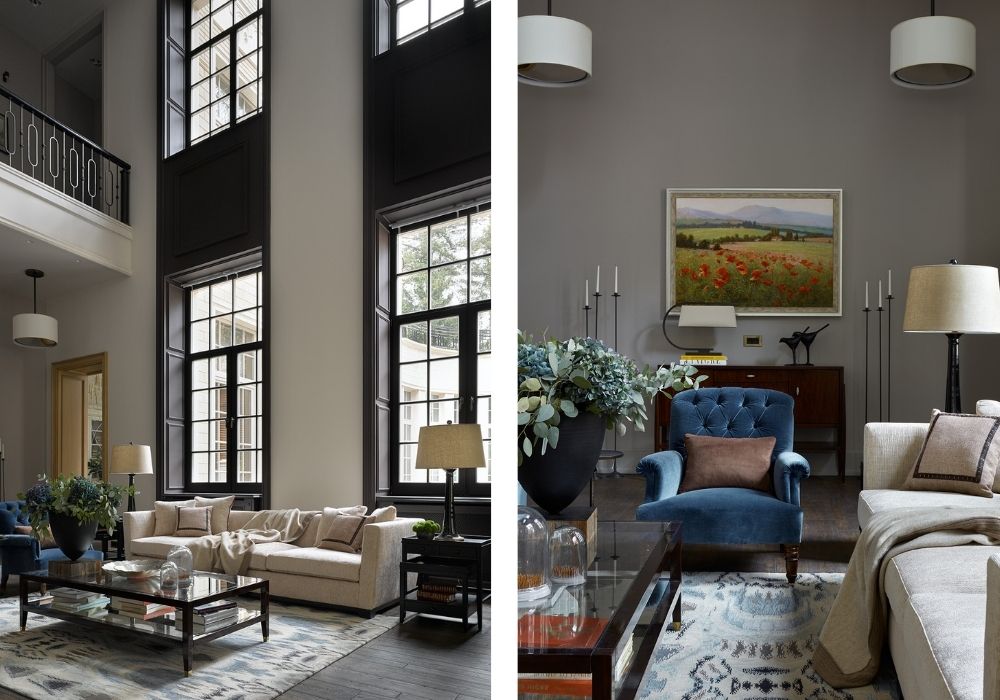
O&A: Is this style close to you?
EM: Yes, very. Who doesn’t like a cosy English house? It is a sort of ideal that was engrained in us by detective novels, films and stories about Poirot.
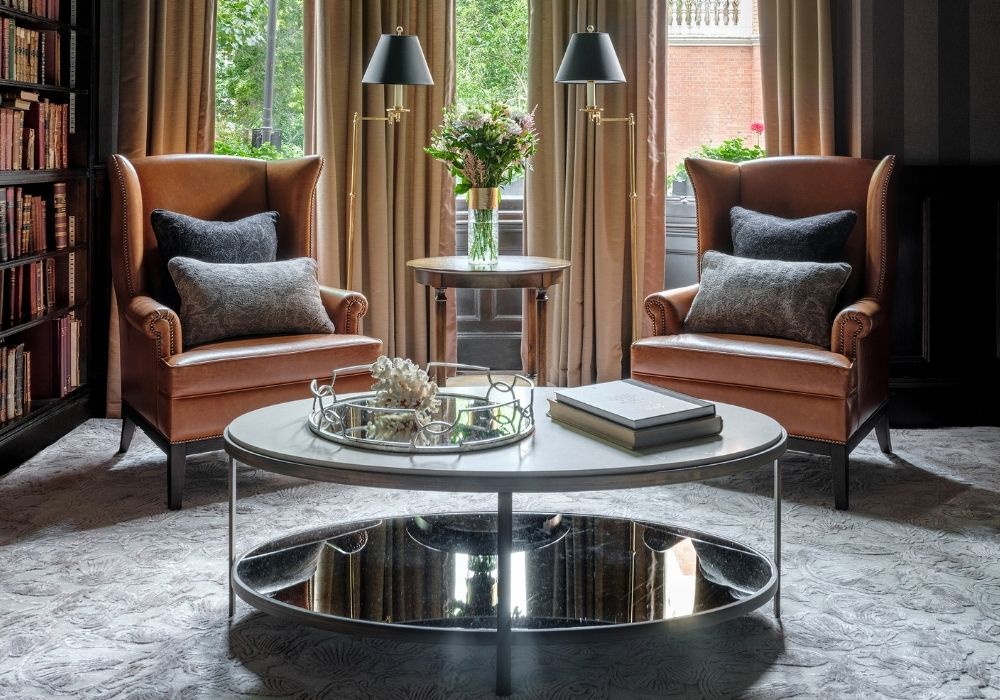
O&A: Very recently you were a curator at the “Interior is Art” exhibition. What other projects are you planning in the near future?
EM: Yes, we have quite a lot planned. Together with the association of designers and interior decorators of Russia we collected the works of fifty-one leading designers in Russia photographed by the best photographers. I chose these fifty-one photos in order to demonstrate how amazing interior photos can be. We really enjoyed doing it and by the way these photos can be purchased. I would love this exhibition to become more regular and I would also love to create a book about Russian interior design where I would include all these photos.

O&A: What is the most important thing in your life?
EM: It is very important to realise that you are alive. Children are happy when the mum is happy, and for the mum to be happy she needs to know that everything she does is not done in vain. The most important thing is to maintain the balance between family and professional life.
O&A: Please share some tips on how you manage to maintain that balance?
EM: I never stay at work late more often that twice a week. I never work on the weekends; I take my children to work with me when I can. This is time management and prioritising the right things because I know that there is nothing more important than putting my child to bed myself.
O&A: What do you dream about now?
EM: Right now, I would love most of all to create the book I mentioned above. It is possible that the absence of any sort of global ambition speaks volumes about the fact that my life is fundamentally ok.




